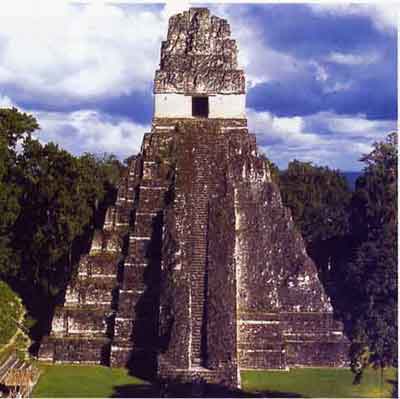Kings weren’t the only people who built Maya temples
 Washington, Feb 26: An archaeologist’s discovery of mortar and other remnants of jungle-wrapped structures in Yalbac, a Maya center in the jungle of central Belize, has indicated that kings weren’t the only Mayan people building or sponsoring Late Classic period temples.
Washington, Feb 26: An archaeologist’s discovery of mortar and other remnants of jungle-wrapped structures in Yalbac, a Maya center in the jungle of central Belize, has indicated that kings weren’t the only Mayan people building or sponsoring Late Classic period temples.
According to Lisa Lucero, professor of anthropology at University of Illinois at Urbana-Champaign, the nitty-gritty physical details of six temples in Yalbac, has led her to build new theories about the politics of temple construction that began nearly two millennia ago.
Her findings at the area has lead her to propound the theory that royals weren't the only builders and sponsors of Maya temples - the stepped pyramids that rose like beacons out of the southern lowlands as early as 300 B. C.
“Preliminary results from Yalbac suggest that royals and nonroyals built temples,” said Lucero.
“In fact, judging by the varieties of construction and materials, any number of different groups – nobles, priests and even commoners – may have built temples, and their temples undoubtedly served their different purposes and gods,” she added.
According to Lucero, because the different groups had the will, resources and freedom to build temples, “the Maya could choose which temples to worship in and support; they had a voice in who succeeded politically.”
“Yalbac’s location on the eastern periphery of the southern Maya lowlands and its distance from regional centers may explain its particular dynamics and its relative political independence,” she said.
The archaeologist’s new propositions challenge academic thinking on Maya temples.
“Maya scholars have basically assumed that rulers built all the temples,” said Lucero. “No one has questioned this, although cross-cultural comparison alone would suggest otherwise,” she added.
Some of the evidence that Lucero is accumulating is in the tons of fill – cobbles, boulders and stone pebbles, some in the tons of mortar – marl, plaster, and various kinds of loam.
Over the years, she has dated ceramics found at Yalbac from about 300 B. C. through A. D. 900; her plaza test pit excavations have exposed floors that date to the same period.
But, the historic record is largely silent on why the Maya, a complex culture with many mysteries still to unravel, had several temples in any given center.
This is why Lucero, among others, believes that archaeologists must seek answers from the buildings themselves and “construct more creative ways to assess what temple attributes can reveal about their non-material qualities.” (ANI)